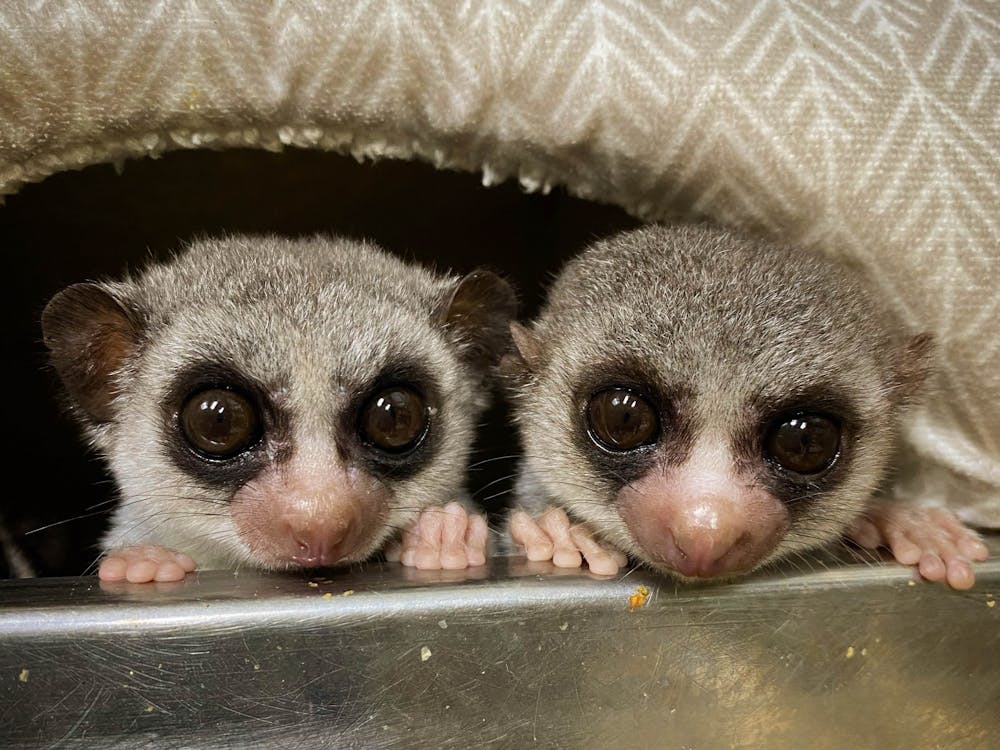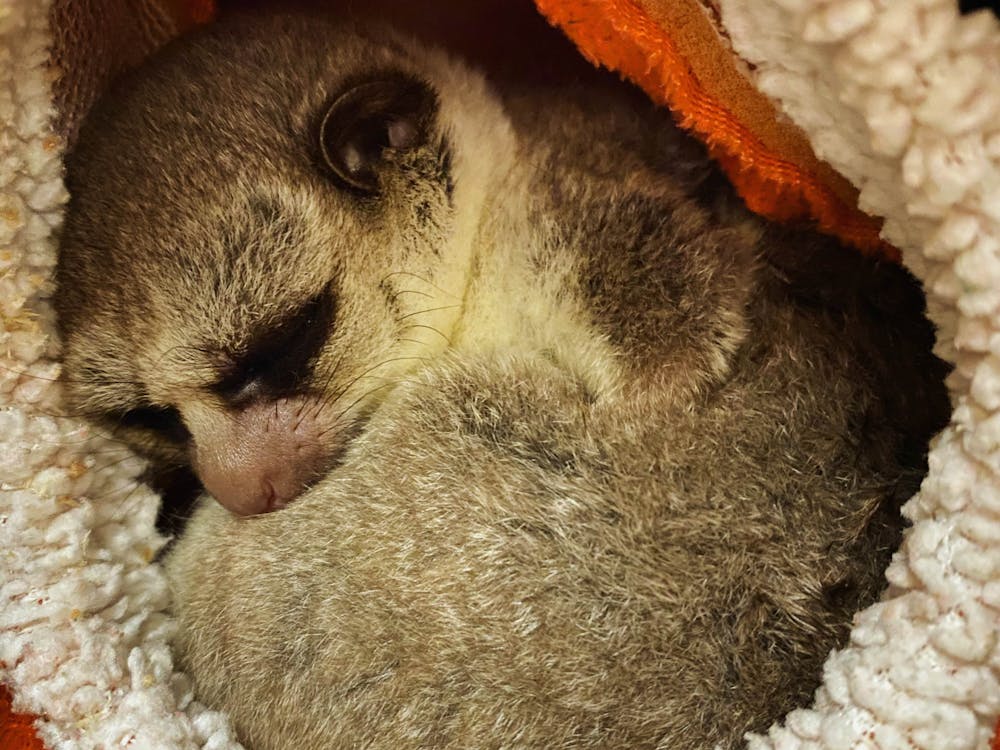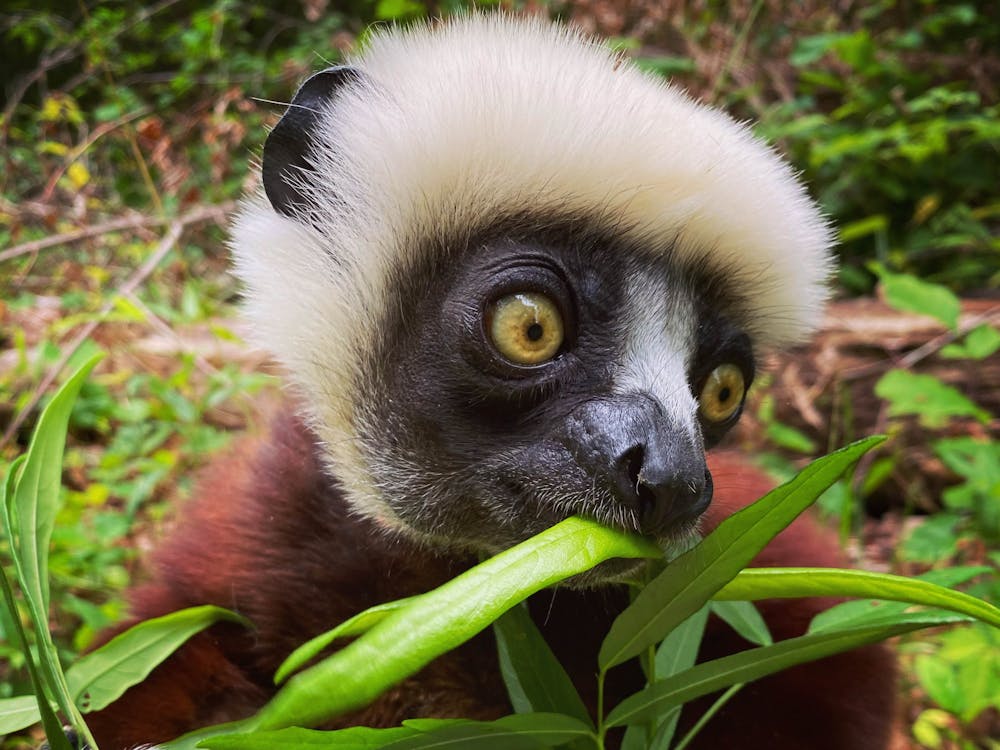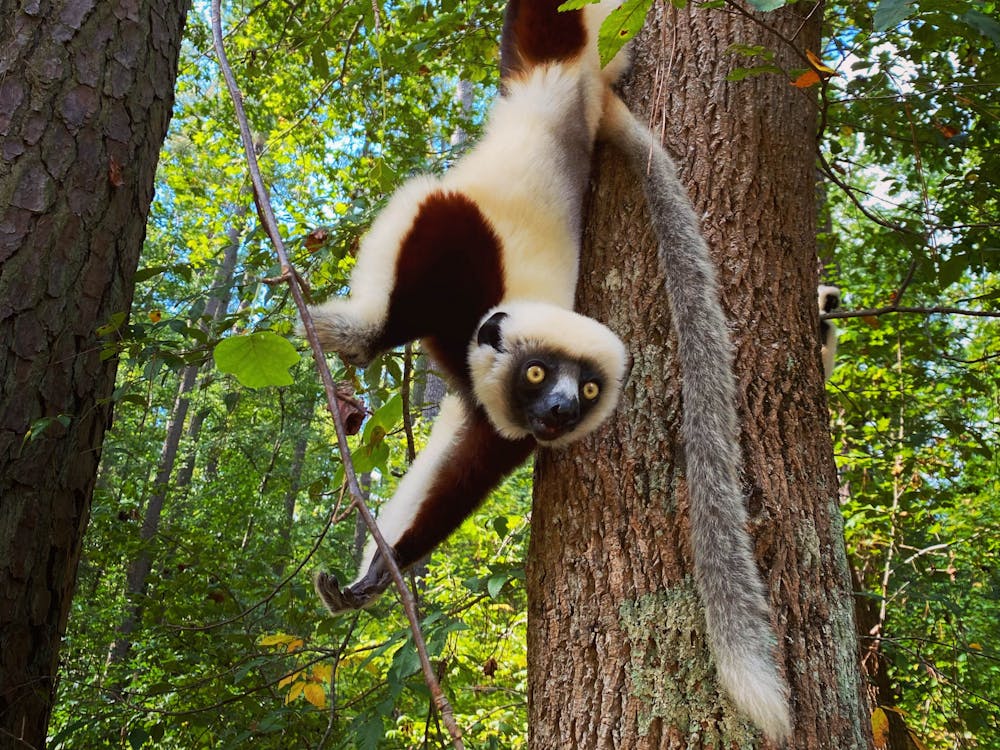The first time Lydia Greene saw sifaka lemurs in the wild in Madagascar, it was a “very emotional” moment for her. She had studied sifakas at the Duke Lemur Center for all of her undergraduate and graduate career.
“I was sweaty and tired, and your body aches, and you're like, ‘When am I ever going to see these animals?’ And then the clouds clear on the animals in front of you, and it's an unforgettable moment,” said Green, Trinity ‘11 and Graduate School ‘19. “It really changed my whole perspective on the species and what it means to be a lemur.”

Greene is now researching lemurs at the Duke Lemur Center. The center, which features the world’s largest and most diverse population of lemurs outside of Madagascar, is a hub for a variety of lemur-related research projects.
Two students, first-years Ava Ondik and Alice Haystead, are undergraduate researchers under Greene, who is a DLC staff scientist and postdoctoral scholar. Greene’s project explores how animals mediate their own health through choosing what to eat and specifically examines sifaka lemurs’ nutrition and gut microbiome. Marina Blanco, another research scientist at DLC, studies the ecology of nocturnal lemurs in Madagascar, specifically dwarf lemurs.
Ondik and Haystead both became involved in their research simply by reaching out.
“It was very casual. I happened to follow Dr. Lydia on Instagram, and she posts a lot of cool lemur facts,” Haystead said. “Someone, not me, asked a question on how to get involved, and she mentioned, ‘If you want to do research, [direct message] me.’ So I DM-ed her.”
Ondik said she and Haystead are researching how gut microbiomes change as the lemurs transition from being free-range in the forest to staying inside during the colder months. Currently, they are collecting fecal samples, and next semester they will begin looking at DNA from the samples.
“We want to use this information to try to create better living conditions for the lemurs and try to better understand how they work,” Ondik said. “It's a nice little sojourn into something that's not on Duke’s campus but that's still just as stimulating.”
Madagascar and marriage
Both Blanco and Greene first met when they were randomly assigned to the same research mission on lemurs in Madagascar.
Seeing the lemurs in the wild that they had studied for so long made the challenges of living in a rainforest worthwhile.
“It’s wet, there's leeches, you’re tired, your pants are ripped, but you don't remember any of that,” Greene said.
“You just remember those amazing moments,” Blanco said.

One time, they pitched their tent under a mango tree that was home to a species of brown lemur. They were very loud and liked to forage for fruit in the middle of the night.
“We were sleeping in our tent, and all of a sudden we hear this screaming troop of brown lemurs come to the mango tree. The mangoes aren't totally ripe, so they're like taking a bite and then throwing it down,” Greene said. “So there was this shower of mangoes that ripped our tent, which we were not thrilled about.”
After the lemurs finished eating and throwing mangoes, the pair discovered that a herd of cows had been following the lemurs around in the nearby area due to the trail of fruit left behind.
“We're in our tent, and all of a sudden we see the shadows of this, like, cow herd coming up to forage on all the leftover mangoes,” Greene said. “That was a very bizarre night.”
They didn’t get any sleep that night. In the morning, Greene discovered a half-eaten mango in one of her shoes that she had left outside the tent.
Research in Madagascar didn’t just contribute to Blanco and Greene’s love for lemurs but also their love for each other.
Now, Blanco and Greene are married to one another and have managed a work-home life balance for over three years.

“I always joke that we study the animals that resemble a little bit of who we are,” Blanco said. “I'm on the nocturnal, more elusive side, and Lydia is the more charismatic, more flashy lemur.”
Blanco and Greene enjoy working at the DLC because there they can ask different questions and use different, non-invasive research methods than if they were in Madagascar. For example, Greene said the animals at the DLC are habituated to humans, and fecal samples are collected reliably multiple times a day. In Madagascar, close monitoring is more difficult, but the natural environment in which the lemurs evolve can be more easily explored.
This is also evident in Blanco’s hibernation setup. Dwarf lemurs in Madagascar hibernate inside tree holes, but at the DLC Blanco checks on them regularly. Instead of tree holes, she constructs boxes called hibernacula which replicate the tree holes, and the lemurs hibernate by curling up into balls within the boxes. The boxes are placed in enclosures inside temperature-controlled rooms.
“In order for [the lemurs] to hibernate, they need to be exposed to cold temperatures,” Blanco said. “We put them in the temperature they experience in Madagascar in the wintertime as a sort of natural fridge.”

An evolving research experience
Ondik and Haystead, the two student researchers, have also experienced the thrills and challenges of working with lemurs at the DLC.
“Being in the woods and having the foliage changing color, and it's just me and a pair of lemurs that I’m watching—it’s a little bit of a surreal experience, since what are the chances I would get to be here in the woods watching lemurs go about their daily business?” Ondik said.
In the beginning, Haystead encountered some difficulty with obtaining DNA samples from the lemurs because they were not pooping, even after she had been outside for three hours in the forest with them.
“I was like, ‘Am I doing something wrong? Why aren’t they pooping in front of me?’” Haystead said. “I started to take an extra Friday shift in hopes that I would maybe get a sample. But that’s part of researching wild animals, unfortunately you can’t tell them what to do.”
The students’ long-term goal is to write a paper on their findings with Greene. They will lead their own independent projects if they find other aspects of the lemurs that interest them.
Greene believes that her and Blanco’s research projects will be “lifelong, evolving projects.” In an interesting field of study, one project always leads to another.
“Good science generates in many ways more questions than answers,” Greene said. “That leads you down additional rabbit holes that you can pursue, so I don't think I'll ever get tired of watching sifakas be themselves.”
Get The Chronicle straight to your inbox
Signup for our weekly newsletter. Cancel at any time.
Alison Korn is a Pratt junior and enterprise editor of The Chronicle's 118th volume.

